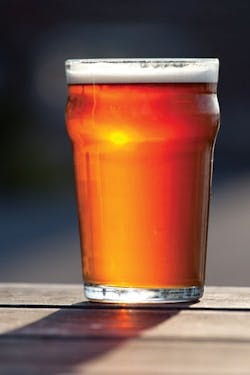About the author: Bob Crossen is associate editor for WQP. Crossen can be reached at [email protected] or 847.954.7980.
Upon learning how a dish is prepared, some people cannot disconnect what was once a favorite food with its history. The same can be said for recycled wastewater, which has struggled to establish a positive public image. But companies are using events and clever marketing to highlight the benefits and assure people the water is safe.
The skepticism about recycled wastewater is prevalent, but in some areas has begun to wane. Orange County, Calif., for instance, has been recycling wastewater for non-potable reuse for many years. It was not until 2008 that it began reusing that water for potable purposes, and that process has been instrumental in ensuring clean water makes it to homes in Orange County, which is suffering from a historic drought like the rest of California.
The process has been shown to work for other applications as well. The WateReuse Assn., in coordination with Xylem Inc., GE, TetraTech and Special Hoperations, a home brewing guild, hosted the New Water Brew Contest in Tampa, Fla., in September. More than 100 contestants brewed beer using recycled wastewater for the event aimed at showcasing the water’s quality and its potential uses.
Tenacious Technology
At the outset of wastewater recycling, professionals understood three hurdles barring the water from mainstream usage: technology, regulations and public perception. Gary Revoir, business developer for infrastructure at TetraTech, said the timeline for acceptable technology has exceeded the expected curve. Recycled wastewater, especially that used for the New Water Brew Contest, also meets all U.S. Environmental Protection Agency standards, and in some cases even exceeds them.
“One of the things that we think gets overlooked with water reuse is how pure the water actually is as a final product,” Revoir said. “In some cases, you actually have to go back and add minerals back in because the water we’re used to on a day-in and day-out basis from rivers or from the ground [is] full of minerals, and a lot of those are taken out through this process, particularly the reverse osmosis (RO).”
Before the water was distributed to the brewing contestants, Revoir said it went through a three-step process known as full advanced treatment (FAT). The water first goes through ultrafiltration to remove solids and bacteria. It then goes through RO treatment and an advanced oxidation process, which is a combination of peroxide fed into the solution prior to ultraviolet (UV) disinfection to destroy any remaining organic contaminants. Revoir said there is talk in the industry of finding alternatives to the process, but FAT is the industry standard.
Xylem, which provided the UV disinfection for the contest, has a pilot container it sends to different projects interested in wastewater recycling around the U.S. Abigail Antolovich, water reuse business development director for Xylem, said developers can toy with the equipment—mixing and matching different products—to determine the best recycling result with the most appropriate cost.
“This particular demonstration unit we used in Florida is completely, fully automated. Our operators can help the local operators because we have remote monitoring capabilities so we can dial in and see what’s happening,” Antolovich said. “[The pilot container] allows people to vet the process pretty thoroughly.”
The Perfect Canvas
The recycling process makes the water so pure that brewers described it as a blank slate. It is like a painter seeing the change from a low-quality, off-white canvas (untreated water) to a high-quality, pure white canvas (recycled wastewater). The colors (flavors) stand out and the canvas’ base color (water properties) can be tooled for the particular work.
“There’s science to everything and there’s science to beer,” Revoir said. “The brewers, when they’re making their beer, they have to know the exact mineral content and other different components of the water because that will truly, directly affect taste.”
In fact, the FAT process made the water so pure that brewers had to reintroduce minerals to their own specifications for their particular beers. This finite control of the beer’s quality and properties makes recipes more easily replicable.
Dan Shirah is president of Spacecoast Associates for the Advancement of Zymurgy (SAAZ), a home brewing club. He has been involved in SAAZ for six years, and has learned many brewing styles. He won the New Water Brew Contest People’s Choice Award for his beer, Stoutly Water, a tropical stout he was able to choose because of the contest’s water profile.
“It basically gave me a blank canvas that I could tailor any way I wanted to in order to come up with a new mineral balance that I thought would work well with my beer,” Shirah said. “I added minerals to the water to create a profile that would support the style of beer I chose. I ended up deciding to make a tropical stout. This style of beer imparts aromas and flavors of chocolate, coffee and rum with a balanced sweetness.”
Left to right, Jason Wiggs and Dan Shirah accept awards at the New Water Brew Contest from Guy Carpenter, WateReuse board president, and John O’Meara, contest liaison.
The Broader Picture
Although he did not have an aversion to recycled wastewater—a high school science teacher’s in-class experiment informed his perception—Shirah recognized the stigma and hurdles associated with wastewater reuse acceptance.
“When you tell someone ‘wastewater,’ they often think of sewers, toilets, factory runoff, etc.,” Shirah said. “Naturally, all of those sources are viewed as unfit for human consumption, and the thought of where the water came from can definitely influence people’s perception of how it will taste.”
When Shirah finished his competition beer, he told some friends it was made with recycled wastewater and told others it was not. Those who knew the water’s history were hesitant. They took time to smell the beer and ask questions. Those concerns were ultimately squashed after the first sip and they enjoyed it as much as those who did not know the water’s history. That is all part of the plan, in Revoir’s mind.
“There’s a new phrase going on in this industry. ‘Judge water by its quality, not from its history,’” Revoir said. “There [are] things that you make leaps for. You’ll stumble and bust your nose to do some of these things, but it’s for the greater good.”
About the Author
Bob Crossen
Editorial Director
Bob Crossen is the vice president of content strategy for the Water and Energy Groups of Endeavor Business Media, a division of EndeavorB2B. EB2B publishes WaterWorld, Wastewater Digest and Stormwater Solutions in its water portfolio and publishes Oil & Gas Journal, Offshore Magazine, T&D World, EnergyTech and Microgrid Knowledge in its energy portfolio. Crossen graduated from Illinois State University in Dec. 2011 with a Bachelor of Arts in German and a Bachelor of Arts in Journalism. He worked for Campbell Publications, a weekly newspaper company in rural Illinois outside St. Louis for four years as a reporter and regional editor. Crossen can be reached at [email protected].

